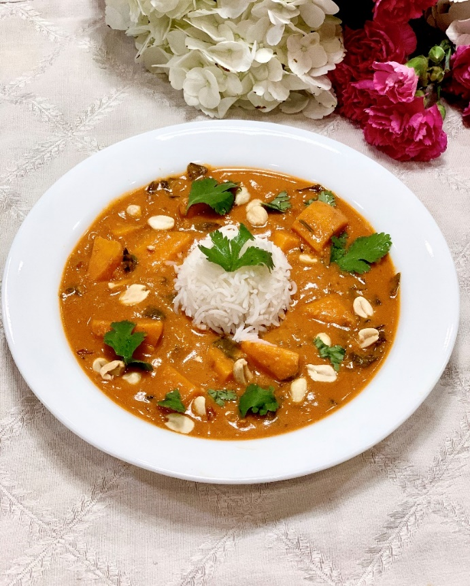
The Proven Platter – Uganda, April 2020
A recurring theme I find as I research cuisine from different parts of the world is one of interconnectedness and of the different ways in which we are similar. The history of human settlement is a story of migration, a movement not just of people, but also of their food, culture, and customs. It is a story of assimilation and amalgamation and nowhere is this more evident than in the food we eat.
While reading about the cuisine of Uganda, I kept coming across dishes that I, as an Indian (of Asia) had grown up eating in the subcontinent. Not only were the names the same – samosa, chapatti, chai – but so were the recipes. Chatting with my mother, a Malaysian of Indian origin and a phenomenal home chef, I mentioned my finding and received a quick lesson in history. Indians had been brought to Uganda to work on railway construction projects by their then British rulers. Many of these workers stayed and made Uganda their home contributing not just to the economy but to the cuisine. By 1972, Indians as a group had become such influential players in the local economy that they were expelled from Uganda by the then President, Idi Amin. Fun fact: Indians returned to Uganda after Idi Amin and in 2019, President Museveni spoke of the possibility of conferring tribe hood on Indians.
Ugandan cuisine is a mix of traditional East African dishes and dishes with English, Arabic, and Indian influences. A quintessential Ugandan dish is Groundnut or G-nut stew. Groundnuts (peanuts) are a staple and a source of protein used in many dishes. G-nut stew in its simplest form is ground peanuts with water, onion, tomato, and seasonings, simmered until it reaches a sauce-like consistency. The peanuts are shelled but not peeled. They are ground along with the peel giving the G-nut sauce a dark pink/violet hue. Typically, Ugandan G-nut stew contains chicken, matooke (green plantains), or potatoes. Today’s recipe is a take on G-nut stew, Ugandan G-Nut Sweet Potato and Greens Stew (vegan, gluten-free). The sweet potatoes can be substituted with chicken, or to keep it vegetarian, chickpeas and any sort of hardy greens.
Please get it touch if you have feedback on recipes or suggestions for future dishes. (Would you like to see more appetizers? Entrees? Desserts?) Email me at vinola4dfw@gmail.com.
Ugandan G-Nut Sweet Potato and Greens Stew
Serving: 8 – 10
Ingredients
Olive oil – 2 tbsp
Onion – 1 medium, diced
Garlic – 5 cloves
Ginger – an inch knob
Sweet Potato – 2, peeled and cubed
Greens (Swiss chard or collard greens or kale)– a bunch, washed and torn or cut into bite-sized pieces
Tomato paste 6 oz can – 1
Smooth Peanut Butter – ½ cup
(Use fresh ground peanut butter that has, if possible, only peanuts)
Cumin – 1 ½ tsp
Crushed Red Pepper – ½ tsp
Salt – to taste
Water – 8 cups
Halved or crushed peanuts – for garnish
Cilantro –a bunch, washed and julienned, for garnish
Directions
Make a paste of the ginger and garlic (I use a mortar pestle). Heat oil in a deep bottomed pot such as a stock pot or sauce pot. When olive oil is hot, add diced onions and sauté until they caramelize.
Add 1 tbsp of the ginger-garlic paste and mix for about 2 minutes. Make sure the heat is on low, so the ginger-garlic paste doesn’t burn.
Toss in the cubed sweet potato and stir until coated.
Add the cumin and crushed red pepper flakes and mix.
Stir in the peanut butter and then the tomato paste (use about 5 oz of the 6 oz can).
Add the water and mix well, making sure there are no lumps of peanut butter or tomato paste and they are well integrated. Cover the pot and turn up the heat to boil.
Once the stew comes to a rolling boil, turn down the heat to simmer and allow it to simmer until the sweet potatoes are cooked, about 15 minutes.
Add the greens and allow to wilt, about 5 minutes.
Taste and add salt to taste. (Note: peanut butter and tomato paste might add some umami flavor to the stew, so it is important to taste and then salt, lest it become too salty.)
Ladle in bowls and garnish with cilantro and crushed peanuts. Serve with rice or other grains of choice or with bread.
Recipe and photo credit: Vinola Munyon
Email: vinola4dfw@gmail.com
